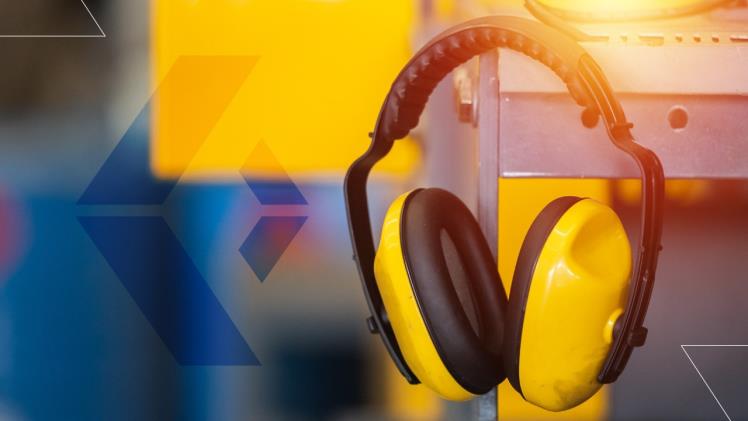In today’s dynamic business environment, the significance of a conducive workplace cannot be overstated. One often-overlooked factor that plays a crucial role in employee productivity, health, and overall organizational effectiveness is noise. Excessive workplace noise can not only hinder concentration and performance but also contribute to stress and long-term health issues among employees. As companies strive to foster a culture of well-being and efficiency, the need for a professional workplace noise assessment emerges as essential. This assessment provides a comprehensive evaluation of noise levels across various office spaces, identifying potential sources of disruption and offering actionable insights for mitigation. By understanding the acoustic landscape of their work environment, businesses can implement tailored strategies that enhance employee comfort and satisfaction. Moreover, with increasing regulations and a growing emphasis on employee welfare, conducting a noise assessment becomes not just a best practice but a critical component of responsible business management. In this article, we will explore the myriad benefits of professional workplace noise assessments, illustrating how they can lead to improved productivity, reduced turnover, and a healthier, more harmonious workplace.
Understanding the impact of noise.
The impact of noise in the workplace extends beyond mere distraction; it can significantly affect employee well-being, productivity, and overall organizational effectiveness. Prolonged exposure to elevated noise levels has been linked to increased stress, decreased job satisfaction, and heightened fatigue among workers. Such conditions can lead to higher turnover rates and increased absenteeism, ultimately affecting a company’s bottom line. Furthermore, noise can impair communication, leading to misunderstandings and errors that further disrupt workflows and hinder collaboration.
Conducting a thorough workplace noise assessment is crucial for identifying problem areas and implementing effective noise management strategies. This assessment not only evaluates the sources and levels of noise but also considers how sound interacts with the physical space and its occupants. By addressing noise issues proactively, businesses can create a more conducive working environment, enhancing employee comfort and productivity while fostering a culture of care and responsibility towards employee health and safety.
Benefits of a tailored noise assessment.
A tailored noise assessment provides businesses with a comprehensive understanding of their unique auditory environment, allowing for targeted interventions that are specifically designed to meet the needs of their workforce. By analyzing specific areas of concern and employee feedback, organizations can develop customized noise mitigation strategies that effectively reduce disruptive sounds, fostering a more focused and engaged workforce. This approach ensures that resources are allocated efficiently, enhancing the effectiveness of noise reduction efforts while minimizing unnecessary expenditures.
Moreover, a tailored workplace noise assessment can lead to improved employee morale and satisfaction. When employees experience a quieter, more comfortable workspace, they are better able to concentrate on their tasks, resulting in heightened productivity and creativity. This proactive measure demonstrates an organization’s commitment to employee well-being, which can enhance retention rates and attract top talent. Ultimately, investing in a tailored assessment not only addresses immediate noise challenges but also contributes to a long-term culture of respect and consideration within the workplace.
Enhancing employee productivity and well-being.
Furthermore, by prioritizing a conducive auditory environment through a workplace noise assessment, organizations can significantly enhance employee productivity and well-being. A well-structured assessment identifies the sources and levels of disruptive noise, enabling companies to implement solutions that create an atmosphere conducive to focus and collaboration. Employees are more likely to thrive in spaces that support their concentration and comfort, ultimately leading to improved job performance and reduced absenteeism.
The positive impact on employee well-being extends beyond productivity metrics. A quieter workplace reduces stress and cognitive overload, contributing to a more harmonious work environment. By addressing noise-related issues proactively, organizations not only cultivate a healthier workspace but also reinforce their commitment to employee welfare. This holistic approach not only boosts morale but also enhances retention, as employees feel valued and supported in their work settings.
In conclusion, a professional workplace noise assessment is not merely an optional enhancement for businesses; it is a crucial investment in employee well-being, productivity, and overall organizational health. By systematically identifying and mitigating excessive noise levels, companies can create a more conducive environment that fosters focus and efficiency. Additionally, adhering to regulatory standards and demonstrating a commitment to employee welfare can enhance a company’s reputation and attract top talent. As the modern workplace continues to evolve, prioritizing a comprehensive noise assessment will ensure that businesses remain competitive while promoting a harmonious and effective work atmosphere.
